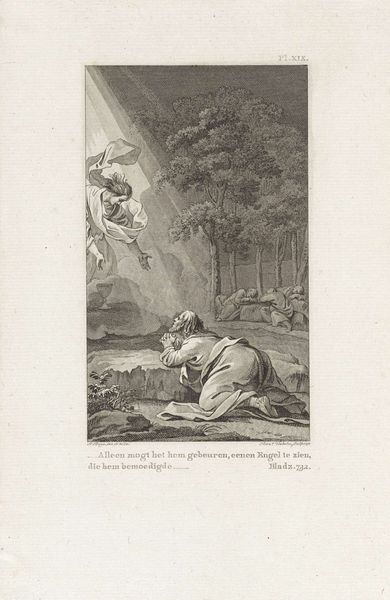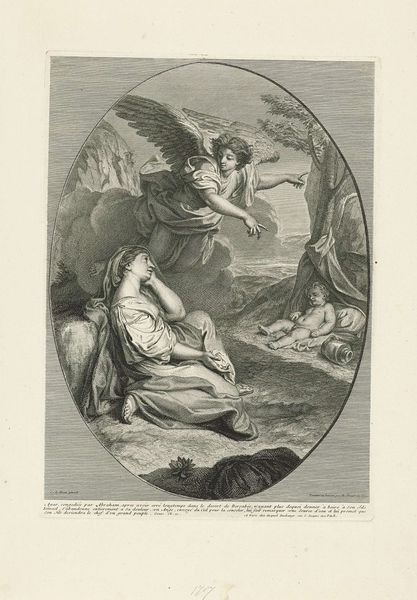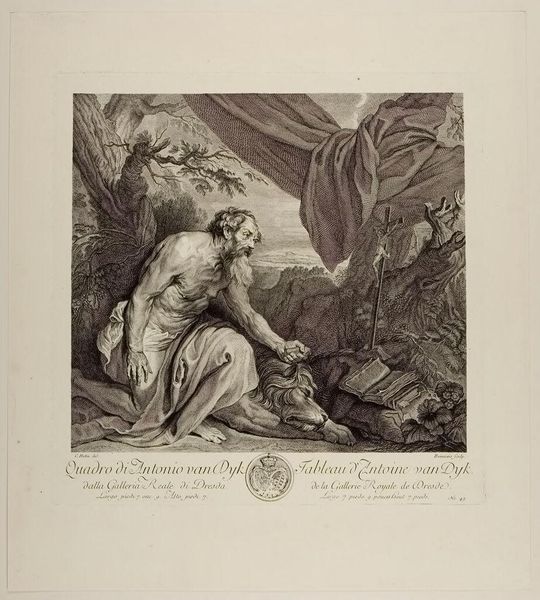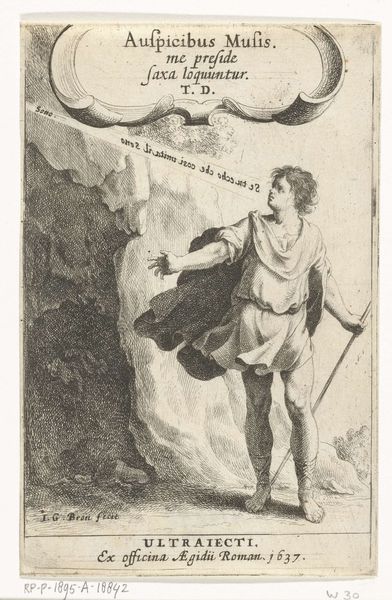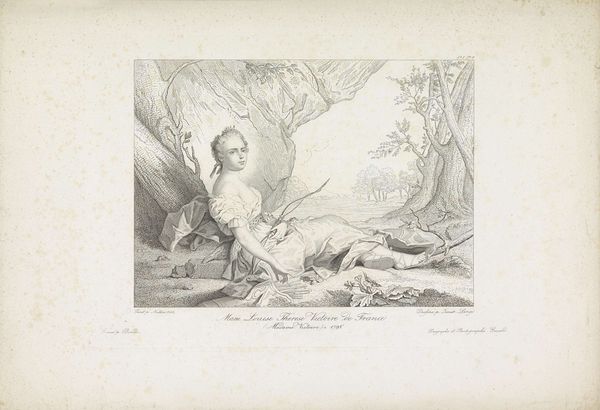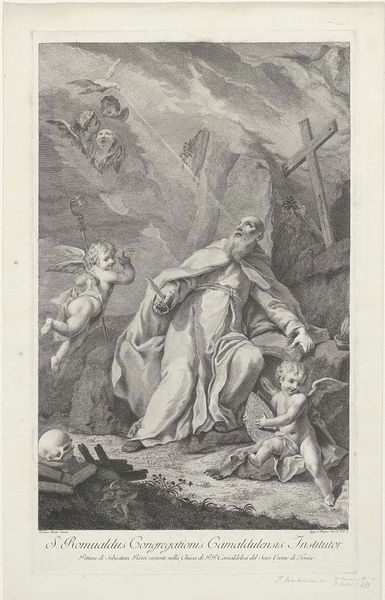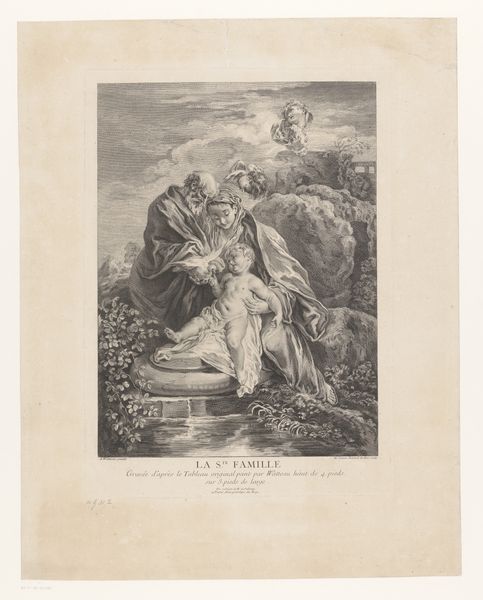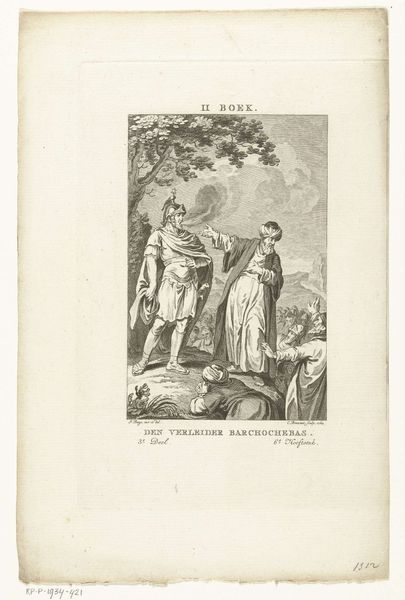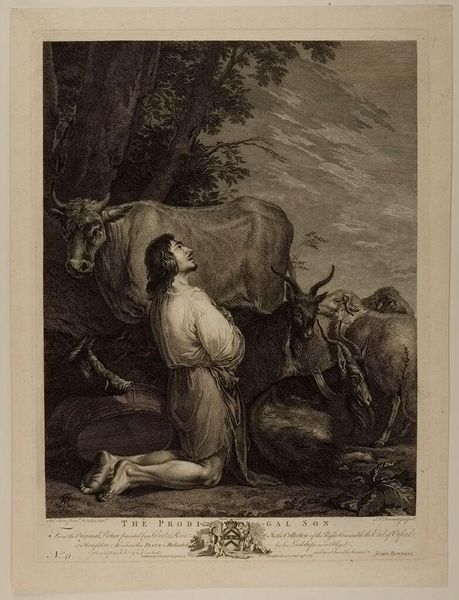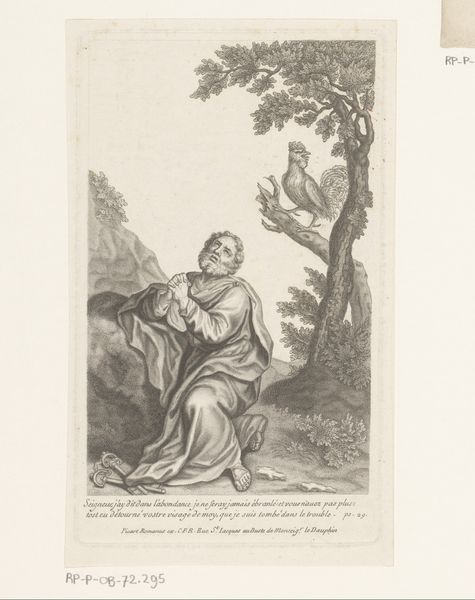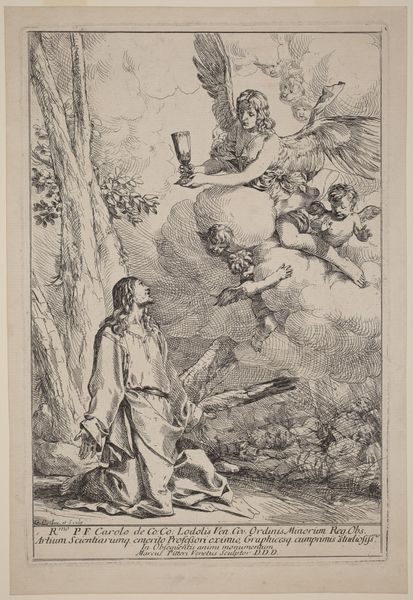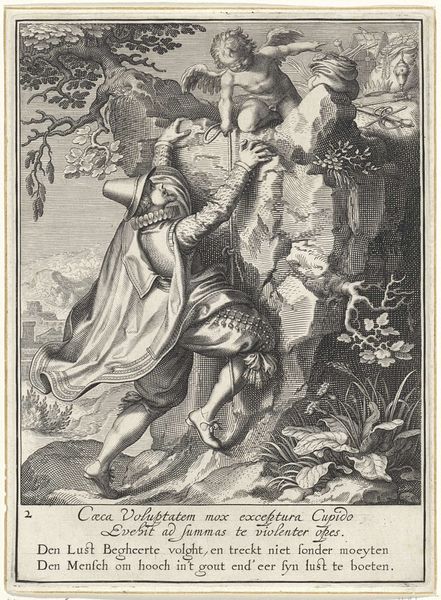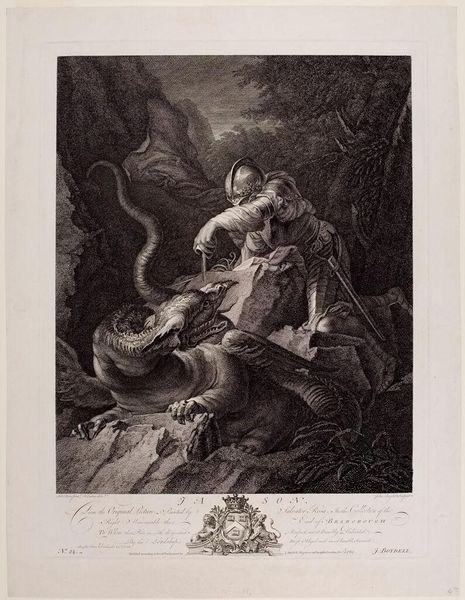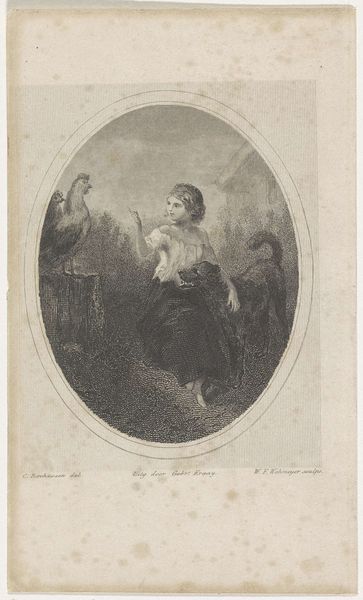
Dimensions: height 243 mm, width 156 mm
Copyright: Rijks Museum: Open Domain
Curator: Here we have Reinier Vinkeles' "Resurrection of Christ," created in 1799. It’s an engraving, a print held in the Rijksmuseum collection. It’s a potent visual narrative of resurrection. What’s your immediate sense of it? Editor: The first thing that strikes me is the raw, almost frantic energy. It is a bold expression of power, yet still retaining vulnerability. It suggests transformation and perhaps, violent upheaval, even in the rendering of Christ’s figure emerging from the tomb. Curator: Yes, the upheaval speaks to the sociopolitical climate of the time, doesn’t it? Vinkeles, creating this image near the cusp of the 19th century, places the resurrection narrative into a revolutionary context. The Age of Enlightenment was clashing with established power structures; considering what "resurrection" meant metaphorically for subjugated populations then deepens the image. Editor: I see that. The classical symbolism is prominent. Christ’s pose echoes Greco-Roman depictions of divinities. The radiant light around him, though, feels like more than just divine illumination; it could be symbolic of the light of knowledge and truth breaking through the darkness of oppression. Curator: Precisely. But it is the almost desperate reactions of the soldiers guarding the tomb that is truly telling. They recoil in fear and bewilderment, a visual representation of the old order threatened by new ideals. We might see those guards representing the conservative power of the Church as it stood then, with the figure of Jesus in stark contrast symbolizing emerging democratic values. Editor: And even something like the scattered weaponry takes on a more charged tone. Spears and shields lying broken, hinting at the failure of military might in the face of spiritual or ideological force. Consider how these symbols, repeated throughout centuries of religious art, shift in resonance during the era of revolution. Curator: That's an important point. What does it mean to portray a divine event through such clearly politicized lenses? What message was Vinkeles intending to impart about power, faith, and the future? The original setting for the resurrection shifts when placed in a visual context infused with such loaded, temporal signs. Editor: I think, ultimately, it illustrates the resilience of symbol itself. These age-old images adapt, become imbued with new relevance generation after generation. What this artwork reflects, more than anything, is the eternal need for transformation. Curator: And isn’t it fascinating to consider that need remains powerfully alive today, still shifting and evolving along with contemporary politics and social landscapes? Editor: It certainly is. Visual language, in this case, echoes far beyond the biblical narrative, turning "Opstanding van Christus" into a poignant observation of history in progress.
Comments
No comments
Be the first to comment and join the conversation on the ultimate creative platform.
